West Bengal
From Mao To Modi — The Transformation In This Cradle Of Red Terror: A Ground Report
Jaideep Mazumdar
Apr 21, 2024, 12:37 PM | Updated Apr 22, 2024, 06:23 PM IST
Save & read from anywhere!
Bookmark stories for easy access on any device or the Swarajya app.
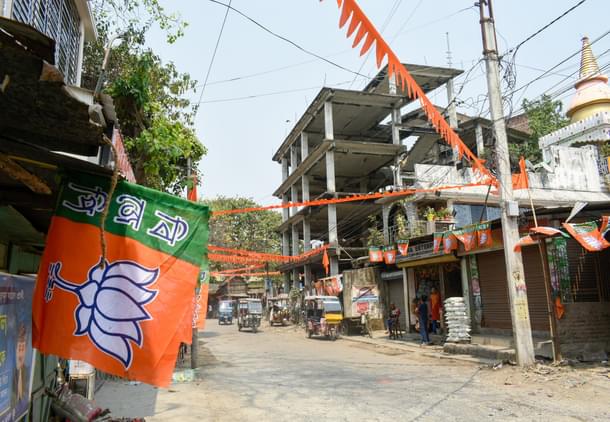
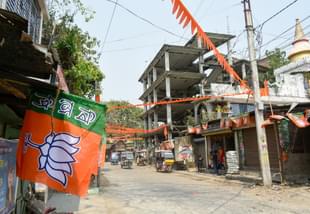
A mid-sized village about 22 kilometres east of Siliguri — the commercial capital of North Bengal — had gained national, and even global notoriety in the late 1960s. Cradling the ‘Maoist movement,' it eventually lent its name to the red terrorists who killed thousands of people and had held, till a decade ago, large parts of central India to ransom.
The reference here is to Naxalbari where an ‘armed revolution’ aimed at overthrowing the Indian state and ushering in a communist dictatorship was born.
Naxalbari became a citadel of the red terrorists in 1967, a ‘liberated zone’ where the top ‘leaders’ of the movement like Charu Majumdar, Kanu Sanyal and Jangal Santhal were safely ensconced. The state police feared to venture anywhere near Naxalbari.
The nondescript village also became a hub for manufacturing firearms and bombs that were used to kill and maim thousands of innocent people, including policemen, all over Bengal.
Camps for the red terrorists sprouted inside the Bahuban jungles near Naxalbari where many ‘class enemies’ — petty traders, suspected police informers, and ‘counter-revolutionaries’ (a communist euphemism for opponents) — were held captive, brutally tortured and executed.
Naxalbari is now a part of the Matigara-Naxalbari Assembly segment, one of the seven that make up the Darjeeling Lok Sabha constituency. It is a bustling town today.
Having travelled to other parts of the Darjeeling Lok Sabha constituency, I decided to undertake the short journey from Siliguri to Naxalbari to look for the remnants of the revolution that never was.
A half-hour drive down the new four-lane highway that’s part of the grand Asian Highway 2 that will stretch from Denpasar (Indonesia) to Khosravi (Iran) brings me to a diversion towards the right onto Panighata Road. This narrow road leads to Naxalbari.
Lo and behold! Naxalbari is awash with saffron. Not only are there no signs of the failed ‘revolution’ here, it appears that Naxalbari and its people are determined to erase memories of the past.
The murderous cries of ‘Chairman Mao zindabad’ and ‘death to bourgeois’ have been replaced by ‘Jai Shree Ram’ and ‘BJP zindabad’ slogans.
It’s Ram Navami; saffron buntings and flags with images of Hanuman and Shri Ram vie for space with BJP flags. There are flags put up by the Trinamool Congress and the Forward Bloc (a constituent of the Left Front), but those are few and far between.
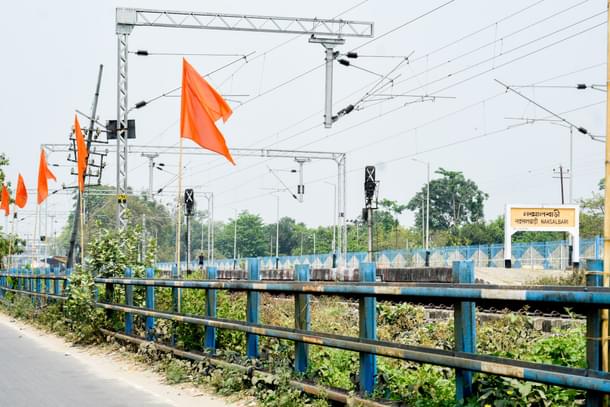
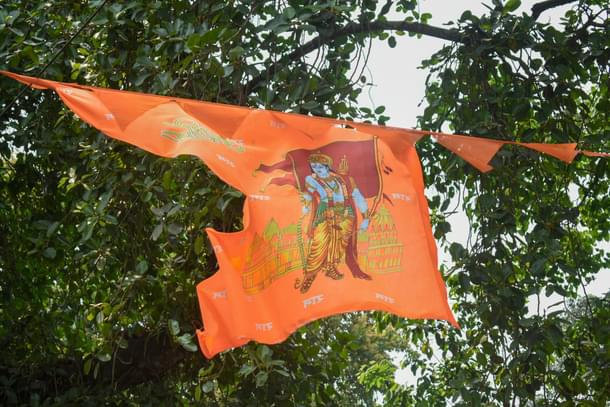
There’s only one remnant of the ‘revolution’ though. A small plot of land beside the Bengaijot Prathamik Vidyalay (primary school) that lies on an extension of Panighata Road and is about 2.5 kilometres from Naxalbari market. It is a pilgrimage site for the left radicals.
This small plot of land has nine red-coloured concrete pillars on which are placed the busts of communist icons: Karl Marx, Frederick Engels, Vladimir Lenin, Joseph Stalin, Mao, (former Chinese Communist Party Vice-Chairman) Lin Biao, Charu Majumdar, Soroj Dutta and Mahadev Mukherjee. They all face the Asian Highway 2 that promises to boost trade and commerce, activities that would have been anathema to them.
A few times a year, ragtag bands of left radicals come from different parts of the country to pay obeisance to their icons. The locals just about tolerate their visits.
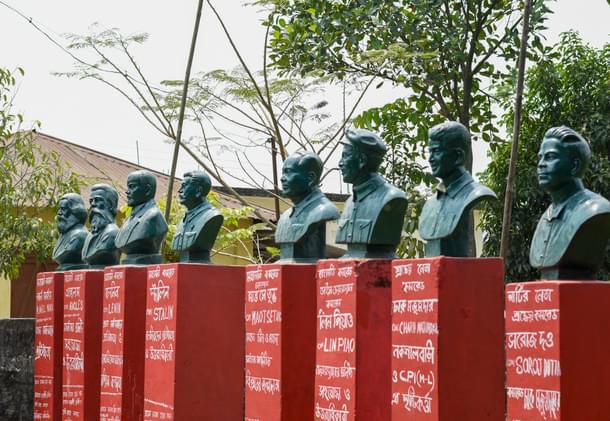
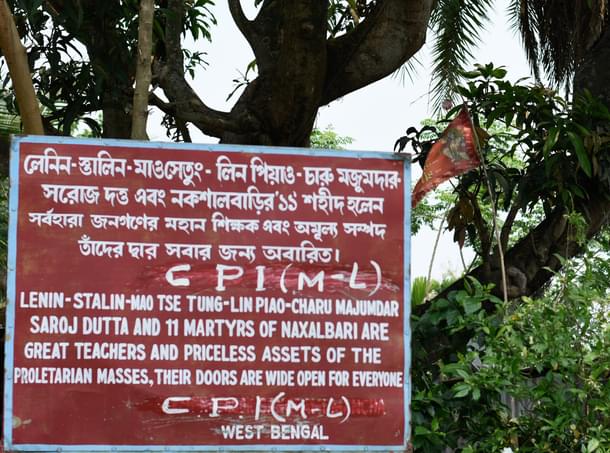
Kiran Saiba, 55, owns a 2-bigha plot of farmland just across the road from this communist pilgrimage site. He’s taking a break under the shade of a tree in his farmland. I approach him and strike up a conversation.
Saiba is a Bodo, one of the ten-odd Bodo families in Naxalbari. His grandparents, he says, settled down here a long time ago.
He has vague memories of the ‘dark days’, he tells Swarajya. “I was very young, but what I remember was an all-pervading fear. My parents took me and my siblings away to a distant relative’s place in Siliguri. We stayed there for over two years. Those Naxals, my parents told me later, had made life hell for us,” Saiba recalls.
“The Naxals tried to force my father (a farmer) to join them and when he refused, they imposed steep taxes on him. They also forced him to shelter fugitives. But the last straw was their demand that my father, who was known for his skills as a blacksmith, work at their arms-manufacturing unit. That’s when my parents decided to relocate to Siliguri,” said Saiba.
The family returned to Naxalbari only after the Naxals were crushed by the then Congress government headed by Chief Minister Siddhartha Shankar Ray. But their (the Naxals’) influence persisted and hung like a shadow of doom over Naxalbari for many years.
The Left Front which came to power in 1977 had a tacit understanding with the Naxals, said Saiba. “They did not indulge in crimes like killings that they used to earlier, but they still had Naxalbari under their grip. They used to be politically active till the late 1990s,’ he added.
During the 34 years of Left's rule, Naxalbari also suffered along with the rest of Bengal. “We lived at subsistence levels, and everything was in a state of shambles. Schools and hospitals were in a sorry state, the economy remained stagnant and there were no employment opportunities. On top of all that, the Left Front government was dictatorial and controlled all aspects of our lives,” he said.
Saiba, like most others in Bengal, thought that things would ultimately change when the Trinamool Congress came to power in 2011. “But we were so wrong. It is actually much worse now,” he tells Swarajya.
He is a victim of Trinamool’s graft and nepotism. He was listed as a beneficiary of the PM Awas Yojana (PMAY), but never got any money to build the new house that he was looking forward to.
“We learnt that wealthy Trinamool functionaries living in two-storey houses had listed their own names as beneficiaries and pocketed the funds meant for us. When we all protested, the disbursal of funds stopped. Trinamool functionaries looted central funds meant for supplying piped drinking water to our houses, for toilets and for many other projects and schemes,” said Saiba.
Saiba’s elder son, Rajesh, is also a farmer. His younger son, Dipen, holds a technical diploma from a government-run Industrial Training Institute (ITI) in the neighbouring Alipurduars district. But getting a job in Bengal proved to be impossible.
“He was a bright student and got good marks. He applied for a state government job against vacancies which had been advertised. He passed the written examinations and before the final round of interviews, he was told he would be selected if he paid a bribe of Rs five lakh. I couldn’t afford that much money so he didn’t get the job. This happened two more times,” said Saiba.
Ultimately, realising that he would not get a job in Bengal without paying a hefty bribe to netas, Dipen migrated to Dubai three years ago. He works there now as a technician with a major company.
“I mortgaged a part of my farmland to raise Rs 1.6 lakh to pay for his work visa and passage, but I cleared that debt within a year with the money he has been sending from Dubai,” said Saiba.
So who will he vote for this time? “Modi,” says Saiba unhesitatingly. “India needs Modi to get rid of all the corruption and to make the country strong. Modi is the only one who can take the country forward. The others are all opportunists and corrupt,” he says, adding that almost everyone in Naxalbari feels similarly.
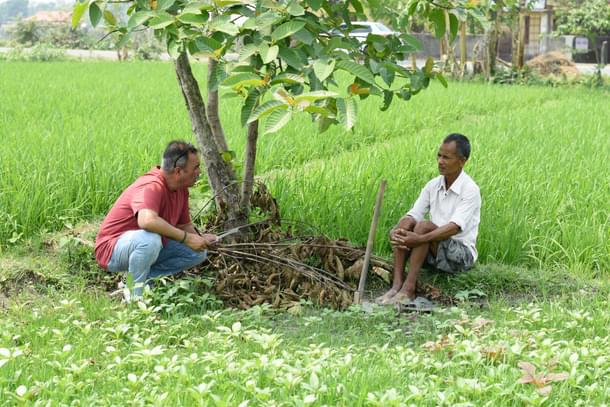
In 2019, Naxalbari voted almost en masse for the BJP. In the 2021 Assembly elections, the BJP’s Anandamoy Burman got a huge lead from Naxalbari and bagged the Matigara-Naxalbari seat.
Anil Saoria, 65, a tribal from Bihar, lives in a house made with recycled tin and corrugated iron sheets next to the memorials to communist icons.
He came from Bihar as a young child with his parents some 60 years ago. “My father was a daily wage earner and worked in the farmlands for big landlords,” said Anil, who married a Rajbongshi and had two sons and two daughters.
“I have dim but very unpleasant memories of those days when this place was a hotbed of Naxals. There was a lot of violence and we lived in fear,” he told Swarajya.
Anil followed in his father’s footsteps and became a sharecropper. The Left Front’s much-touted ‘Operation Barga’ — redistribution of ceiling-surplus lands among sharecroppers and landless — did not benefit his family.
“CPI(M) functionaries got the ceiling-surplus farmlands registered in their names and we remained sharecroppers. Only the ownership of the lands we cultivated changed from the big landlords to CPI(M) netas,” said Anil.
A little over two decades ago, Anil fell ill and couldn’t work anymore in the farmlands. He got a petty job in a ration shop. He still works there because, he says, he cannot afford not to.
“We thought our plight would improve after the Trinamool came to power. But things have remained the same,” he tells Swarajya.
Anil’s sons work as masons in Malda and Murshidabad respectively. Both his daughters are married. I met the younger one, Reba Singha, who was visiting her parents.
Reba’s husband drives a battery-operated rickshaw and she runs a small shop. They barely make enough to make ends meet. “Our income is limited, but we have to pay the Trinamool netas regularly. My two sons study in government schools but haven’t got free uniforms and textbooks. The midday meal that they get is substandard and I’ve heard Trinamool functionaries are syphoning funds meant for the meals,” said Reba.
Anil Saoria and Reba Singha also haven’t received funds to construct houses under PMAY even though they were listed as beneficiaries.
“We will vote for the BJP, of course. We are sick of the corrupt and extortionist Trinamool netas,” she says.
On my way back to Naxalbari market, I spotted an elderly man filling plastic jars from a roadside tap. I stop to speak to him and find out that he cycles nearly two kilometres every day from his house to fill the jars with drinking water.
Bhabesh Sarkar, 70, says that water pipes were laid till about half a kilometre from his house with central funds under the Jal Jeevan Mission. “But that was all that happened. Trinamool leaders pocketed the remaining funds so we don’t get piped water,” he said.
He remembers the Naxal-plagued days of his adolescence. “Those were terrible times, but things are no better today. There is such a lot of loot and corruption, unemployment is rife and Bengal’s economy is in the doldrums,” said Bhabesh, who used to run a small grocery store beside what was then National Highway 327.
That highway became part of Asian Highway 2. “The highway was widened and the small plot of land on which my shop stood was acquired. Though it was government land, I got fair compensation from the Union Government. However, I had to pay local Trinamool leaders a portion of the compensation and was left with Rs 1.5 lakh,” he told Swarajya.
He has two sons — the elder one is a sharecropper and the younger one a private tutor. “My sons earn a little bit and we get by whatever little savings I have,” he says dismally.
“I am old, but I want a brighter future for my sons, my grandchildren and for the coming generations,” he said. It is with that hope, he adds, that he will be voting for the BJP. “There is no alternative to the BJP. Modi is the only one who can fix things,” he added.
A little farther down the road, I come across a brand new pharmacy named ‘Drisha Pharmacy.’ The owner, Bijay Kumar Singha (a Rajbongshi) is there with his wife Nilima and daughter Drisha after whom the pharmacy has been named.
Bijay, 36, confesses that he was a Trinamool functionary. “I believed in Mamata Banerjee and worked wholeheartedly for her since I was a teenager when she was in the opposition. Our whole family was anti-communist and we were Congress supporters. Then we became Mamata Banerjee’s supporters,” he said.
“But I was dismayed by the way things have turned out. The party (Trinamool) has veered from Mamata Banerjee’s ideals and has become corrupt. It is full of self-serving people whose only purpose is to make money and secure their personal interests,” said Bijay.
Three years ago, he disassociated himself from the Trinamool. “I cut off my ties with the Trinamool. It was a painful decision, but the right one. I am a Hindu and I follow the right path,” he said, taking time off from a puja he was holding in his pharmacy.
Bijay is reluctant to indicate who he’ll vote for this time but ultimately says he will support the BJP. “There is simply no alternative to the BJP. My parents and my brothers also feel the same. We do not fully support the BJP’s ideology, but we realise that the BJP is the only party that can take India forward. Right now, we need a strong leader like Modi and need to make him stronger for the good of the country,” he told Swarajya.
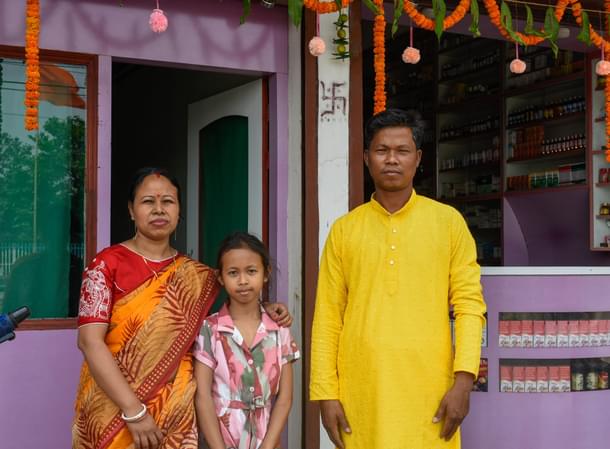
Like Bijay, Bimal Prasad Ghosh, 68, was also a Congress supporter and then a Trinamool supporter. But he now supports the BJP.
His father owned a lot of farmland and also a carpentry business. “The Naxals assaulted him, looted our house and had we not fled Naxalbari, we would have been killed by those terrorists. We were well-known Congress supporters,” he tells Swarajya.
Bimal Ghosh runs a small sweet shop in Naxalbari bazaar now. “We returned to Naxalbari from Siliguri sometime in 1974. Our house had been stripped bare of everything. There was nothing in the house. The Naxals had reduced us to penury. And then the CPI(M) leaders took away all our lands under the guise of ‘Operation Barga’, but they became the owners of our lands instead of the sharecroppers,” said Bimal.
The family had to face a lot of discrimination and intimidation because of their opposition to the communists and support for the Congress. After Mamata Banerjee broke away from the Congress and formed the Trinamool Congress, the Ghosh family shifted their allegiance to the new party.
They rejoiced when the Trinamool came to power in 2011. “We really thought it was the advent of a new dawn and things would change in Bengal. Now we realise it was actually the beginning of another long, dark night,” he said.
Ghosh does not want to talk much about why he got disillusioned with the Trinamool. “I don’t want to talk much about the past, I want to look ahead. And the way ahead not just for me but the entire country is with the BJP. Modi is the only leader who can deliver. We need Modi to return to power with a stronger mandate,” he added emphatically.
A few other traders, auto-rickshaw drivers and youngsters I spoke to at Naxalbari market all turned out to be BJP supporters. They claimed that most of Naxalbari would vote for ‘lotus’ this time.
As I drove down Naxalbari’s saffron-festooned main road with BJP flags fluttering busily in the hot summer afternoon breeze, it was difficult to imagine that red radicals had once marched down this road and started a movement that consumed so many lives and dreams across the country.
It is difficult to imagine that today’s saffron-adorned Naxalbari, a stronghold of the BJP, was once the crucible of a violent, hateful ideology that has caused such a lot of bloodshed and torment. An ideology that, thankfully, is on its deathbed now.
This report is part of Swarajya's 50 Ground Stories Project - an attempt to throw light on themes and topics that are often overlooked or looked down. You can support this initiative by sponsoring as little as ₹2999. Click here for more details.
Also read: The revolution that never was: 50 years later, Naxalbari shrugs off its gory past





